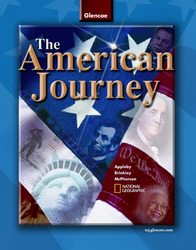The American Journey © 2007Chapter 24:
The Jazz AgeWeb Lesson PlansIntroduction
In this chapter students have read about the changes in America following World
War I. The automobile created many of these changes. Americans could live farther
from their places of work and could travel more easily. This had a major impact
on cities and the tourism industry. The automobile also provided independence
for young people. In this activity students will visit the Henry Ford Museum
to learn more about his contributions to the automobile industry.
Lesson Description
Students will visit the Henry Ford Museum to learn more about the development of the automobile. They will answer questions about Ford's background and his cars that shaped the American automobile industry, and will then design a car of the future.
Instructional Objectives- The learner will be able to describe the beginnings of the automobile industry.
- The learner will be able to describe the importance of mass production and assembly lines.
- The learner will be able to design a car of the future.
Student Web Activity Answers- In 1891, Ford became an engineer with the Edison Illuminating Company in Detroit. This signified a conscious decision on his part to dedicate his life to industrial pursuits.
- It was called the Quadricycle because it ran on four bicycle tires.
- The mass production and low price of the Model T enabled many Americans to buy an automobile. It was easy to operate, maintain, and handle on rough roads.
- The massive Rouge Plant included all the elements needed for automobile production: a steel mill, glass factory, and automobile assembly line. By September 1927, all steps in the manufacturing process from refining raw materials to final assembly of the automobile took place at the Rouge Plant, characterizing Henry Ford's idea of mass production
- Students' designs will vary.
 | 




